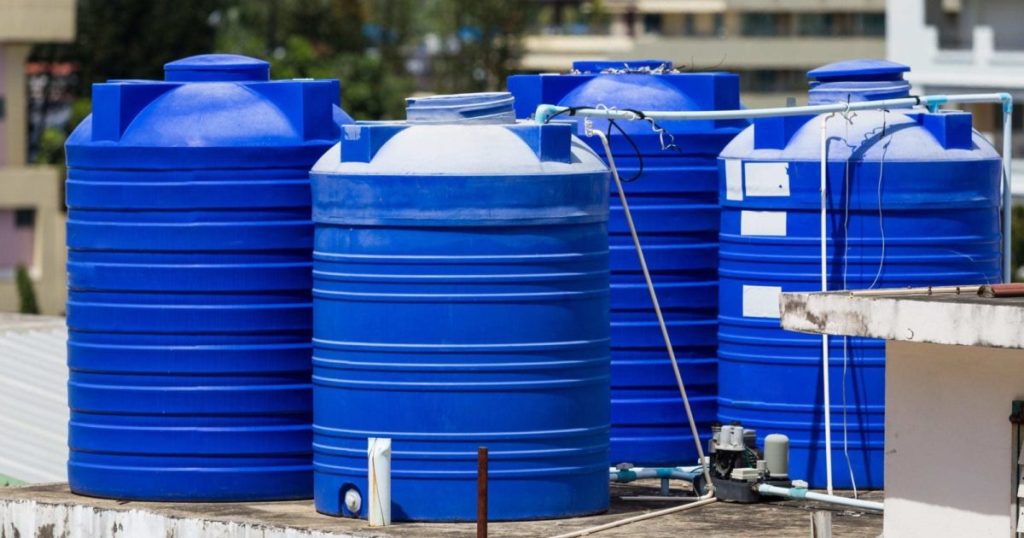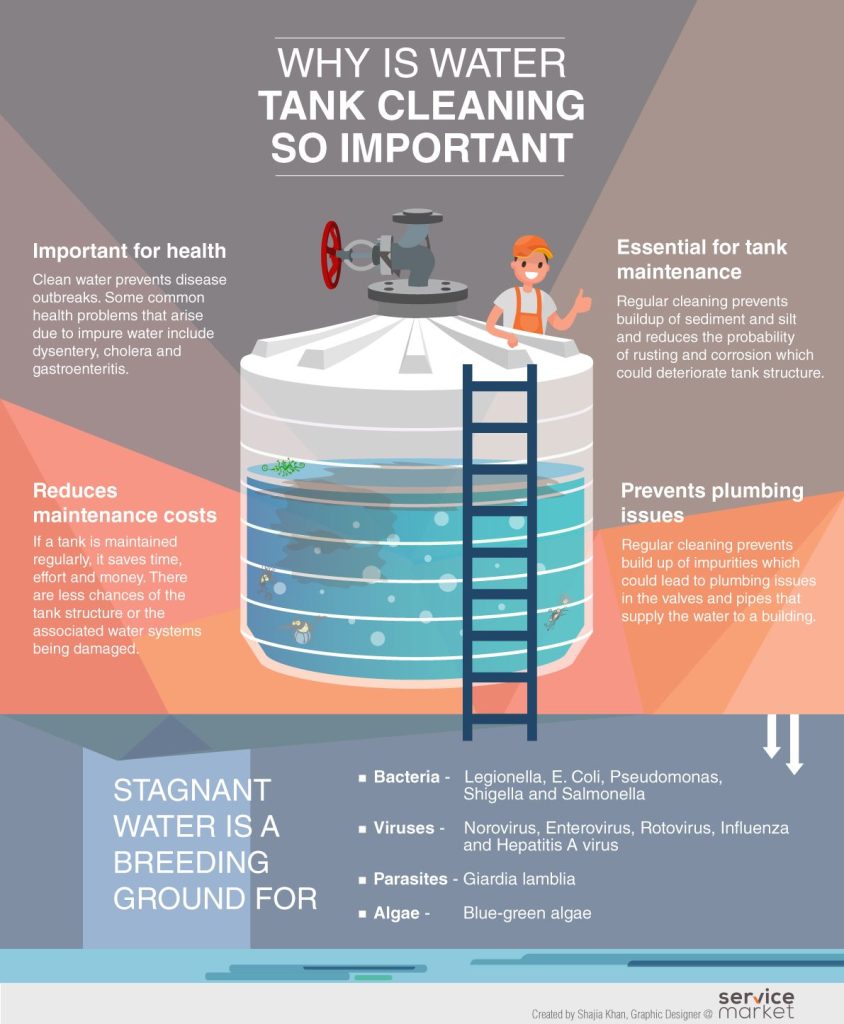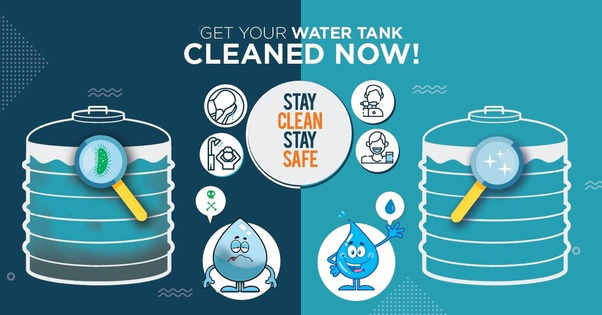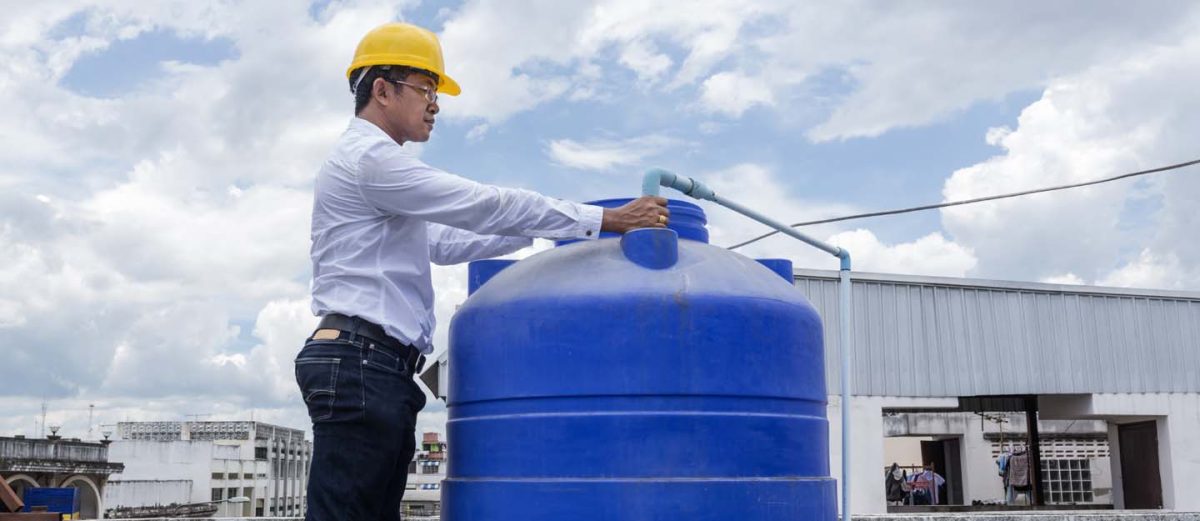Water, the elixir of life, is an indispensable resource that sustains all living beings on Earth. Access to clean and safe drinking water is essential for maintaining good health and preventing waterborne diseases. While the importance of clean water is widely acknowledged, many overlook a crucial aspect of ensuring water purity: regular water tank cleaning.
The Role of Water Tanks

Water tanks are essential components of residential, commercial, and industrial setups, serving as storage reservoirs for water before distribution. They collect rainwater or receive water from external sources, making them vulnerable to various contaminants such as dirt, debris, bacteria, algae, and even insects. Over time, sediment settles at the bottom of the tank, creating a breeding ground for harmful microorganisms that can compromise water quality.
The Importance of Regular Cleaning
- Health and Safety: The most compelling reason for regular water tank cleaning is to safeguard the health and safety of individuals who rely on the water supply. Contaminated water can lead to a host of waterborne diseases, including gastrointestinal infections, cholera, and dysentery. Children, the elderly, and those with compromised immune systems are particularly susceptible.
- Water Quality: Sediment buildup and microbial growth can significantly degrade water quality, leading to foul odors, unusual taste, and discoloration. Regular cleaning helps maintain the aesthetic and sensory properties of water, making it more appealing and palatable.
- Water Tank Cleaning Preventing Bacterial Growth: Stagnant water in a neglected tank becomes a breeding ground for bacteria, algae, and other pathogens. Regular cleaning disrupts these ecosystems, preventing their proliferation and ensuring that the water remains free from harmful microorganisms.
- Longevity of Tank: Sediment accumulation at the bottom of the tank can corrode its interior, leading to structural damage and reducing the tank’s lifespan. Regular cleaning removes this debris, helping to preserve the tank’s integrity and extend its usability.
- Cost Savings: Neglecting water tank cleaning can result in poor water quality, which might necessitate the installation of additional water purification systems. Regular cleaning reduces the need for such interventions, leading to long-term cost savings.
Steps for Effective Water Tank Cleaning

- Draining: Begin by completely draining the water tank. This can involve turning off the water supply and opening the tank’s drainage valve to allow the water to flow out.
- Scrubbing and Disinfecting: Once the tank is empty, scrub the walls and floor using a brush and a mild detergent. For disinfection, use a mixture of water and chlorine bleach to eliminate bacteria and pathogens. Ensure proper ventilation while working with bleach.
- Rinsing: Thoroughly rinse the tank with clean water to remove any residual cleaning agents or disinfectants.
- Removing Sediment: Any remaining sediment can be removed using a wet-dry vacuum or by scooping it out manually.
- Refilling: After water tank cleaning, refill the tank with clean, treated water. Be sure to follow local guidelines for water treatment, especially if the water will be used for drinking or cooking.
Frequency of water tank Cleaning
The frequency of water tank cleaning depends on factors such as the size of the tank, the source of water, and the level of water usage. In general, residential tanks should be cleaned at least once or twice a year, while commercial or industrial tanks might require more frequent cleaning due to higher water usage.
Regular water tank cleaning is not just a matter of aesthetics; it’s a crucial step in ensuring access to clean and safe water. Neglecting this responsibility can have serious health implications and compromise the overall well-being of individuals and communities. By prioritizing regular water tank cleaning, we contribute to a healthier, safer, and more sustainable future for everyone.
Understanding the Gravity of Clean Water
Water is often referred to as the “blue gold” of our planet, and with good reason. It’s a precious resource that sustains life and supports ecosystems. Ensuring the availability of clean and safe drinking water is a fundamental responsibility, and a key aspect of achieving this goal is through the regular cleaning of water tanks.
Environmental Factors and Water Contamination
Water tanks, whether installed for household or commercial use, are exposed to a range of environmental factors that can contribute to water contamination. Dust, leaves, bird droppings, and other debris can find their way into open tanks. Even closed tanks aren’t immune; condensation, leakages, and temperature changes can create a moist environment conducive to the growth of microorganisms.
The Hidden Threat: Biofilm Formation
One of the lesser-known challenges of water tank contamination is the formation of biofilms. Biofilms are slimy, complex microbial communities that adhere to surfaces submerged in water. They provide a protective environment for bacteria, algae, and other microorganisms to thrive. These biofilms can be extremely difficult to eliminate and can continuously release contaminants into the water.
The Far-reaching Consequences
- Health Implications: Waterborne diseases pose a significant threat when water tanks aren’t properly maintained. Bacteria like E. coli, Salmonella, and Legionella can multiply in stagnant water and cause illnesses ranging from mild gastrointestinal issues to severe respiratory infections if we don’t do water tank cleaning.
- Economic Impact: The cost of treating waterborne diseases places a burden on healthcare systems. Additionally, contaminated water can lead to work and school absenteeism, affecting productivity and learning outcomes.
- Water Scarcity: In regions where water is scarce, every drop counts. Contaminated water often gets wasted, either due to health concerns or the need for additional purification measures.
- Infrastructure Damage: Water tanks that are not regularly cleaned can suffer from corrosion and deterioration. This can lead to leaks, reducing the efficiency of water storage and distribution systems.
The Cleansing Process: A Comprehensive Approach
- Regular Inspections: Regular water tank cleaning & visual inspections can identify early signs of contamination, allowing for timely action.
- Professional Expertise: Periodic professional cleaning and maintenance are essential. Experts have the tools and knowledge to reach all areas of the tank, ensuring a thorough cleaning process.
- Safe Water tank Cleaning Agents: The choice of cleaning agents matters. Non-toxic, eco-friendly options should be preferred to avoid introducing harmful substances into the water supply.
- Preventing Biofilm Formation: Implementing strategies to prevent biofilm formation, such as using ultraviolet (UV) disinfection or installing tank liners, can go a long way in maintaining water quality.
Community Participation and Awareness
The responsibility of maintaining clean water doesn’t rest solely on water management authorities. It extends to communities and individuals. Raising awareness about the importance of water tank cleaning can lead to more responsible water usage and proactive measures.
Regular water tank cleaning is not just a chore; it’s a critical step in preserving the purity of our water resources. The impact of contaminated water goes beyond physical health, affecting economies, ecosystems, and overall well-being. By embracing regular cleaning practices, investing in advanced purification technologies, and fostering a culture of responsible water usage, we can ensure that clean water continues to flow from our taps, sustaining life and prosperity for generations to come.
Water: A Source of Life and Vitality
Water is the foundation of life, an element without which existence as we know it would be impossible. It sustains ecosystems, nourishes crops, and quenches our thirst. The critical role that water plays in our lives cannot be overstated, making it imperative that the water we consume is of the highest quality. This brings us to the often-overlooked aspect of water storage – the regular cleaning of water tanks.
The Nexus of Contamination: Water Tanks Cleaning
Water tanks, whether located on the rooftops of homes or in industrial complexes, serve as reservoirs for the water we rely on for various purposes. These tanks, while essential, can inadvertently become breeding grounds for contaminants if not properly maintained. Dust, leaves, sediment, and organic matter find their way into these tanks, creating an environment conducive to the growth of harmful bacteria, algae, and pathogens.
The Silent Threat: Microbial Growth
One of the most insidious threats lurking within neglected water tanks is the growth of microorganisms. Stagnant water combined with organic matter provides an ideal breeding ground for bacteria like Legionella, which can cause severe respiratory illnesses. Algae growth not only affects water quality but can also clog pipes and distribution systems, leading to reduced flow rates and increased energy consumption.
Ripple Effects of Inaction
- Health Compromises: Consuming water from contaminated tanks can lead to a myriad of health issues. Waterborne diseases, often accompanied by symptoms like diarrhea, vomiting, and fever, can spread rapidly through communities.
- Environmental Strain: Contaminated water often gets discarded, taxing already strained water resources. Moreover, untreated tank water that enters water bodies can disrupt aquatic ecosystems and harm aquatic life.
- Infrastructure Damage: Sediment buildup can corrode the interior of tanks, leading to structural damage. Additionally, the accumulation of sediment affects the accuracy of level indicators, leading to inefficient water management.
Guardians of Purity: The Role of Regular water tank Cleaning

- Preserving Water Quality: Regular water tank cleaning is a proactive measure to ensure that the water stored remains pure and safe for consumption. It prevents sediment accumulation, algae growth, and the formation of biofilms.
- Health Safeguarding: By eliminating the breeding grounds of harmful microorganisms, regular cleaning significantly reduces the risk of waterborne diseases.
- Prolonging Tank Life: Tanks that are cleaned regularly are less likely to suffer from corrosion and deterioration, thus extending their lifespan and saving on replacement costs.
A Multi-Faceted Approach to Clean Water
- Periodic Cleaning: Residential water tanks should ideally be cleaned every six months, while commercial and industrial tanks may require more frequent cleaning due to higher usage.
- Professional Expertise: While manual cleaning is effective, seeking professional services ensures a thorough cleaning process, including hard-to-reach areas.
- Hygienic Practices: Individuals should adopt hygienic practices, such as covering tank inlets, ensuring proper ventilation, and promptly addressing leaks to prevent contamination.
Educating and Empowering Communities
Raising awareness about the significance of regular water tank cleaning is paramount. Communities, along with local authorities, should work together to disseminate information, provide guidelines, and conduct workshops to empower individuals with the knowledge needed to maintain clean water sources.
Water tank cleaning isn’t merely a chore; it’s a responsibility that contributes to the health, well-being, and sustainability of our communities. The impact of clean water reaches far beyond the act of drinking; it encompasses agriculture, industry, and the overall resilience of our ecosystems. By recognizing the importance of regular water tank cleaning, we become stewards of a precious resource, ensuring that the water we consume remains a source of life, vitality, and prosperity.
The Essence of Clean Water
Water is the foundation of all life. Its purity is a non-negotiable aspect of ensuring the well-being of individuals and communities. While most of us are vigilant about the cleanliness of the water we drink, the journey of water from the source to our taps involves various stages, including storage in water tanks. Regular water tank cleaning, often underestimated, is a critical link in this journey that directly impacts the quality of the water we consume.
The Silent Contaminant Accumulator: Water Tanks
Water tanks, whether made of concrete, plastic, or other materials, are an integral part of water distribution systems. These tanks accumulate water from various sources, such as rainwater or municipal supply, before it’s delivered to our homes, schools, and workplaces. Over time, sediment, organic matter, and microorganisms find their way into these tanks, gradually compromising water quality.
Unveiling the Hazards: Contaminants and Risks
- Microbial Growth: Stagnant water and the presence of organic matter provide an ideal breeding ground for bacteria, viruses, and algae. These microorganisms can multiply rapidly and contaminate the entire water supply.
- Biofilm Formation: Biofilms, complex communities of microorganisms encased in a protective slime, develop on tank surfaces. These biofilms can harbor pathogens and release them into the water, even after disinfection.
- Sediment Accumulation: Sediment settles at the bottom of the tank over time, leading to reduced storage capacity. Additionally, this sediment can clog pipes and affect water flow rates.
- Odor and Taste: Accumulated impurities can impart unpleasant odors and tastes to the water. This not only affects drinking water but also water used for cooking and hygiene.
The Multi-Dimensional Importance of Cleaning
- Public Health: The most immediate and pressing reason for regular water tank cleaning is safeguarding public health. Contaminated water can lead to a range of waterborne diseases, affecting people of all ages.
- Water Quality: Clean water isn’t just about being free from visible contaminants; it’s about maintaining the aesthetic and sensory qualities that make water inviting to consume.
- Longevity of Infrastructure: Regular cleaning helps extend the life of water tanks and associated infrastructure. Corrosion and degradation, often accelerated by sediment accumulation, can be mitigated through proper maintenance.
- Sustainability: Clean water contributes to a sustainable environment. Wastage due to contamination and the need for extra purification measures can strain natural water sources.
A Systematic Approach to Purity
- Regular Cleaning Schedule: Establishing a routine cleaning schedule is essential. The frequency depends on factors like tank size, water source, and local conditions. Residential tanks may require cleaning every six months, while larger tanks might need attention more frequently.
- Thorough Cleaning Process: The cleaning process involves draining the tank, scrubbing its walls and floor, and removing sediment and debris. Professional services ensure a comprehensive and effective cleaning process.
- Disinfection: After cleaning, disinfection is crucial to eliminate any remaining microorganisms. Chlorine-based disinfectants are commonly used but should be handled with care.
Community Engagement and Responsibility
The significance of regular water tank cleaning goes beyond individual actions. Communities, local authorities, and governments should collaborate to educate people about the importance of clean water practices. Workshops, campaigns, and awareness programs can empower individuals to take an active role in maintaining water purity.
Final Thoughts
Regular water tank cleaning is not a luxury but a necessity. It’s a responsibility that extends beyond personal health to community well-being and environmental sustainability. Embracing this responsibility ensures that the water we consume remains a symbol of vitality, purity, and life itself. By understanding the intricate relationship between clean water and a thriving society, we pave the way for a healthier and brighter future for generations to come.

